- Home
- Encyclopedia
- Conservation Politics: ‘Triple A’ Anderson and ...
Conservation politics: ‘Triple A’ Anderson and the Yellowstone Forest Reserve
A.A. Anderson’s favorite self-description was “artist-hunter.” In his autobiography, he wrote, “The two ruling passions of my life have always been hunting and painting.” But Anderson, who founded the Palette Ranch west of Meeteetse, Wyoming Territory, in the 1880s, played other roles, too: Rancher, conservationist, author, publisher, philanthropist, world traveler, patron of aviation, and celebrity networker.
And the best window into this man and the challenges of his times may come from his brief, controversial time as a forester—as superintendent of the Yellowstone Forest Reserve from 1902–05.
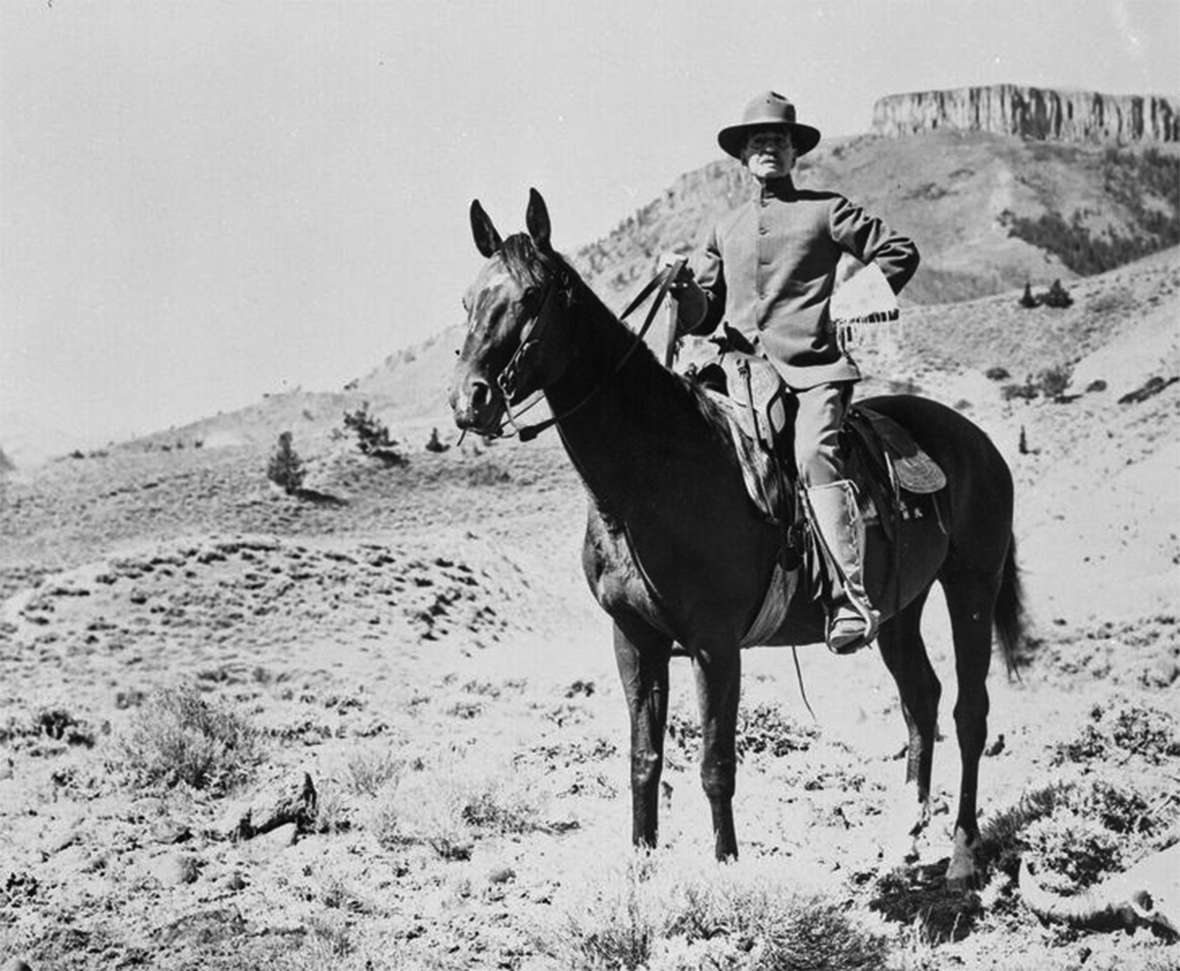
Artist, hunter and hobnobber
Abraham Archibald Anderson was born in Hackensack, N.J., in 1846. Little is known about his early life. He was one of 10 children; his father was a civil engineer turned pastor in the Dutch Reformed Church. Anderson received a good high school education but apparently didn’t attend college or fight in the Civil War; he claimed to have briefly studied medicine and succeeded in the dry goods and manufacturing business. According to his autobiography, when he sold a painting for $800, presumably in the mid-1870s, he decided to sail to Paris to study art.
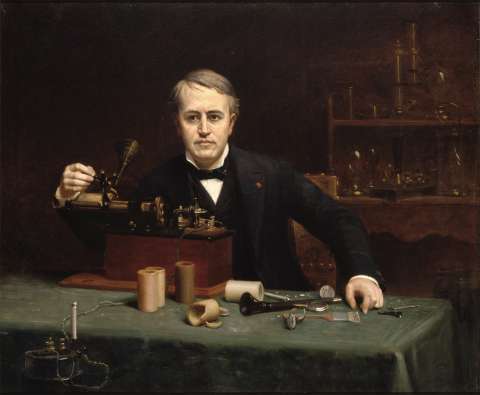
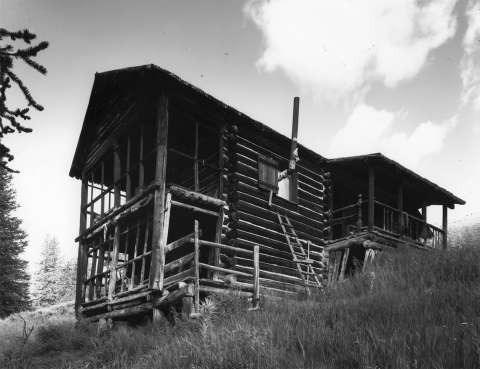
Probably a contributing factor in that decision was his 1876 marriage to heiress Elizabeth Milbank. Her fortune gave him freedom to pursue his passions. They had a long marriage; Elizabeth pursued her own passions, mostly in New York City where she was a noted philanthropist. Their daughter, Eleanor A. Campbell, became a medical doctor and founded a successful low-income health clinic on the Lower East Side; their son died in childhood.
But the public self-image that Anderson stewarded rarely featured his family. Instead he called himself “independently wealthy,” which was probably fair by the standards of his day. He used that wealth to spend several years in Paris, studying under top names in the pre-Impressionist era. He once won a gold medal at a Paris salon. He eventually gained particular acclaim as a portraitist; his 1890 portrait of Thomas Edison hangs in the National Portrait Gallery in Washington, DC.
But Anderson was perhaps more notable for his social network. He bought a mansion on the Boulevard du Montparnasse and used it to establish the American Art Association of Paris, a center of expatriate life. Prominent Americans visiting Paris would stop by; sometimes Anderson painted their portraits and often he became a friend. He knew Mark Twain, for example, and claimed to have served as Edison’s Parisian interpreter.
To pursue his other passion, hunting, Anderson traveled to frontier Wyoming. During his first visit, probably in the 1880s, the Bighorn Basin was sparsely inhabited; the towns of Cody, Powell, Basin and Meeteetse did not yet exist. For years after Anderson decided to buy a ranch on the upper Greybull River, it was a two- or three-day trek from the nearest railhead at Red Lodge, Mont.
But Anderson was drawn to these easternmost foothills of the mountains southeast of Yellowstone National Park because they featured abundant wildlife. They served as winter range for elk herds that summered in the park. And with elk, of course, came Anderson’s arch-nemesis, the grizzly bear. He claimed to have killed 39 in his lifetime, including four on a single day.
At the Palette Ranch—where the colors included reds and russets of the riverside cliffs, spring greens of grasses or autumn yellows of cottonwoods, the whites of the snowcapped Absaroka peaks, and the blue of the never-ending sky—Anderson built a European-style hunting lodge. Its huge living room featured tapestries, fur rugs, hunting trophies, and a stone fireplace that could fit four-foot logs. The guest room boasted silk sheets and a crystal mantelpiece from Japan. The grounds included a swimming pool and small golf course as well as a painting studio.
He built another studio far out in the mountains. At the remote studio, he would sometimes paint from nude models, and today the river nearby is still known as Warhouse Creek, presumably a more printable approximation of what some area cowboys believed was really going on. Today that studio, located inside Washakie Wilderness in the Shoshone National Forest, is on the National Register of Historic Places.
The upper crust
Although Anderson was a unique character, his establishment of the Palette Ranch reflected a wider trend: wealthy hunters as western pioneers. Most famously, Theodore Roosevelt (another friend of Anderson’s) spent large portions of the years from 1884 to 1887 in North Dakota.
Likewise, Anderson’s upper-Greybull neighbor Otto Franc was born a German nobleman. These aristocrats wanted to hunt the West’s extraordinary wildlife. They became interested in conservation as they saw declining game populations threaten their pastime.
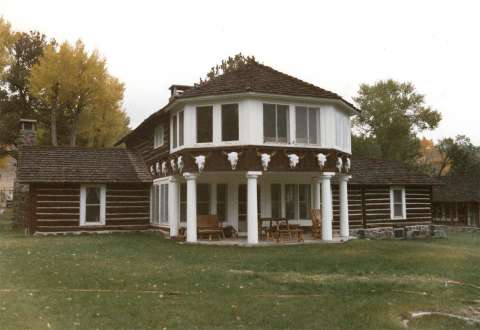
Anderson was “perhaps the most influential individual in bringing eastern aristocracy to this corner of Wyoming,” wrote Robert E. Bonner in William F. Cody's Wyoming Empire: The Buffalo Bill Nobody Knows. Anderson continued to introduce prominent members of his social network to northwest Wyoming well into the 20th century.
For example, in 1908 he invited his friend William Robertson Coe to the Palette Ranch for a hunt. Delighted with the trip (they killed four grizzlies and two elk) Coe purchased area property from William F. “Buffalo Bill” Cody the following year. Coe, whom the New York Times described as a “sportsman and racehorse owner” in a notice of his marriage, later became a major Wyoming philanthropist; the William Robertson Coe Library at the University of Wyoming bears his name and the family remains prominent in Wyoming politics and philanthropy.
In 1913 Anderson hosted Prince Albert of Monaco; after their successful hunt at the Palette Ranch, Buffalo Bill joined them for a second expedition near Pahaska Tepee just east of Yellowstone Park, which was so well publicized that it may be the most famous hunt in Wyoming history.
Especially in early years, eastern aristocrats sought to have an impact on conservation in the West. Roosevelt, for example, co-founded the Boone and Crockett Club in New York in 1887. He hoped it would do for animals what the Audubon Society did for birds: advocate for laws that would benefit their habitat.
Similarly, Anderson was a charter member of the Camp Fire Club, formed in 1897 to “further the interests of hunting and conservation.” Designed to be less hoity-toity than Boone and Crockett, less focused on social standing, the Camp Fire Club has ended up with a lower historical profile. But its members included noted conservationists such as Roosevelt, Gifford Pinchot, who later founded the U.S. Forest Service, and William Hornaday, founder of the Bronx Zoo. The club played a role in protecting American bison, Alaskan fur seals and Glacier National Park. A.A. Anderson served as the organization’s president for its first decade.
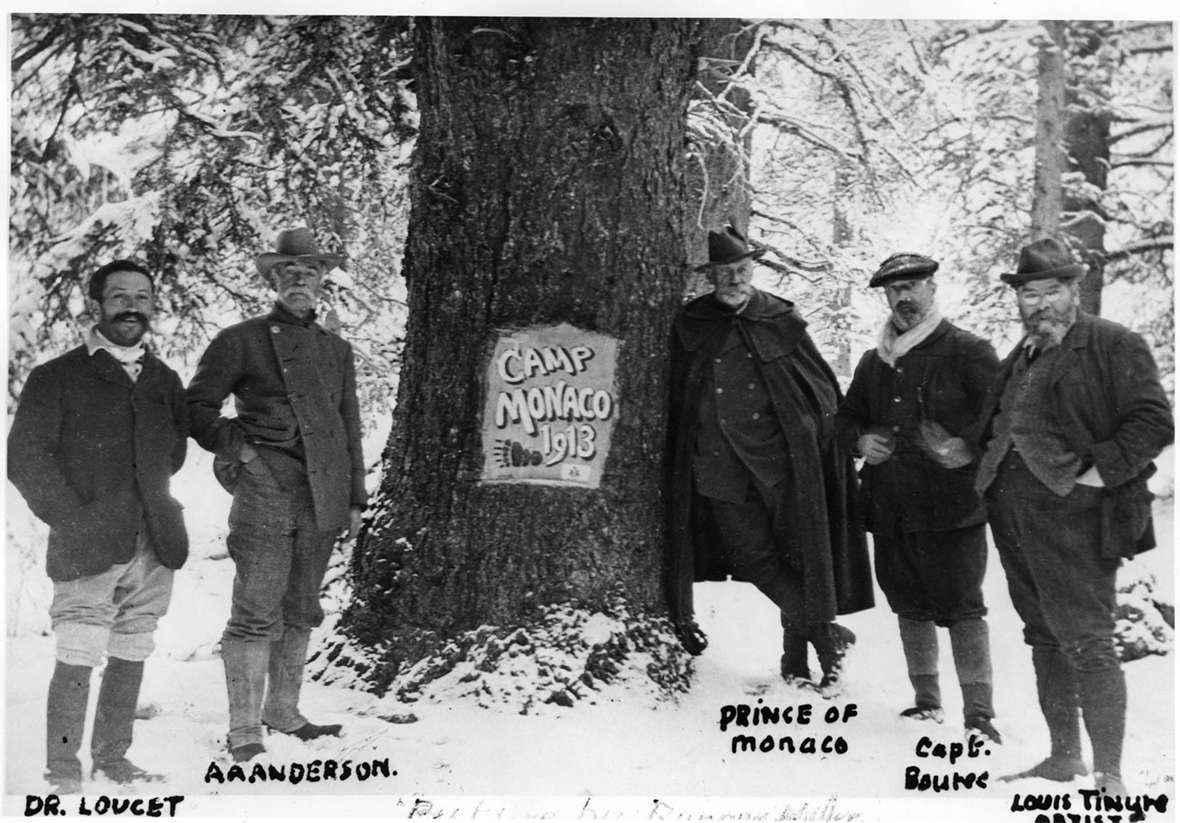
Wahb, the bear Anderson couldn’t kill
In Paris, Anderson had met another American artist-hunter married to an heiress. Ernest Thompson Seton would soon achieve fame as an author-illustrator of children’s books about nature, and as a co-founder of the Boy Scouts. In Paris, Seton was frustrated that the establishment came to prefer Impressionism to his realistic, sometimes lurid paintings of bears and wolves. Anderson was equally dismissive of Impressionism, and by 1895 both men had left Paris for the New York area.
Seton too was active in the Camp Fire Club (he would eventually succeed Anderson as president), and in 1897 the club’s "Recreation Magazine" asked him to do a series of articles on wildlife in Yellowstone. Seton brought his wife, Grace, to Yellowstone; Anderson, wife Lizzie, and perhaps daughter Eleanor met them near today’s Roosevelt Lodge in the northeastern quarter of the park for several days of fishing and camping.
The Setons had so much fun that they returned to Wyoming the following autumn. Anderson met them in Jackson Hole with two men and a 16-horse pack train. They camped their way back to the Palette, tracking elk, hunting antelope, and enduring a three-day snowstorm. Along the way, and during their subsequent sojourn at the ranch, Anderson continually told tales of a glorious, gigantic bear that he called Wahb (supposedly Shoshone for “white bear”).
Wahb had menaced area cattle herds for years, consistently eluding the guns and traps of Anderson and his neighbors. And at least in Anderson’s stories, Wahb was everywhere: Wahb must have made the 14-inch track that Grace saw on the Upper Wiggins Fork north of Dubois, “big enough for a baby’s bath tub,” she wrote. Wahb could well have been the gigantic bear Ernest had seen the previous summer while hiding in a garbage pit behind Yellowstone’s Fountain Hotel. Grace wrote, “I had heard so many tales of this monster that when I gazed upon his track I felt as though I were looking at the autograph of a hero.”
Over the next year, Seton consolidated and embellished those stories into perhaps his best-known book, Biography of a Grizzly. It was a story told from Wahb’s perspective—and, despite the factual-sounding title, clearly invented.
Seton dedicated the book to Anderson. But there’s no record of how Anderson reacted to its sentimentalized, anthropomorphized portrait of a bear that lived with dignity and died of natural causes. To Anderson, bears were enemies, and needed to be personally vanquished. In 1915, a full 17 years after Seton’s visit, Anderson finally killed a bear he believed to be Wahb—and announced his triumph in a front-page article in a Cody newspaper.
The Yellowstone Forest Reserve
A major early victory of the aristocratic sportsmen was the 1891 creation of the world’s first national forest, the Yellowstone Timber Land Reserve. The Yellowstone reserve and a host of other forest reserves established the following decade generally lacked organization and purpose, however. They were governed out of the often-corrupt General Land Office of the Department of Interior, and had minimal on-site staff. The Yellowstone reserve, for example, did not get a superintendent until 1898—and that man, a political appointee named A.D. Chamberlain, rarely left Cody or even his hometown of Evanston to spend time on the reserve itself.
As a preservationist, Anderson was concerned. To him, the purpose of a reserve was to preserve wildlife habitat. Yet without enforcement of its regulations, people treated it like other not-yet-homesteaded government land: they cut trees, grazed cattle and sheep, and even built cabins and tended crops. Anderson had particular disdain for sheepmen. Their herds overgrazed the range, and, he believed, they frequently set forest fires.
In 1902, President Theodore Roosevelt reorganized and expanded the northwest Wyoming forest reserves. Roosevelt then appointed Anderson general superintendent of four divisions (Absaroka, Shoshone, Wind River and Teton) on the newly named Yellowstone Forest Reserve. According to Anderson, it was all Anderson’s idea, and he even helped Roosevelt draw lines on the map for the reserve’s boundaries.
This was three years before the establishment of the U.S. Forest Service. Rangers, hired for their outdoor skills, usually lacked any background in forestry or range management, and received little training. They were generally expected to police grazing and timber cutting, improve trails, eject squatters, settle disputes, and put out fires. They also did a great deal of paperwork on timber and grazing permits. In the winter, when Anderson was in New York, applications had to be routed through him there.
Furthermore, although Anderson was working for his friend (and fellow Camp Fire Club member) Gifford Pinchot, organizational structures and missions were still poorly defined. Thus Anderson got to put his own imprint on operations. For example, he had his rangers appointed assistant Wyoming state game wardens, without pay, to give them more authority in dealing with poachers. He implemented a military structure with rangers ranking from privates to lieutenants. Anderson designed a military-style uniform and insisted that rangers wear it. In print he was always known as “A.A. Anderson”; to friends he was apparently “Abram” or “Triple-A”; but from this point forward he enjoyed being called “Colonel.”
Anderson was superintendent during construction of what is known today as the nation’s oldest ranger station, in Wapiti, Wyo, about 20 miles west of Cody. However, that distinction is not nearly as impressive as it sounds: It was the first station to be constructed with government funds. Rangers across the country used many, often improvised, structures as home base. For example, in Sunlight Basin, northwest of Cody in 1903, ranger Jesse W. Nelson took over an old illegal homesteader’s cabin. Other rangers built structures without government funds. (They had to supply their own horses, bedrolls and other equipment, so building their own cabins would have seemed consistent with the terms of the job.)
Anderson’s other accomplishments included a boundary survey of the reserve, anti-rustling enforcement, and banning hunting on the reserves by Native Americans. (Anderson was sympathetic to natives. He later wrote, “Our treatment of the Indians is a blot on American history.” But on the reserves his primary concern was the health of wildlife populations, and American Indians, from his point of view, killed too many antelope.) He also claimed to have reduced demand for illegally killed elk by helping to convince the Elks Clubs, the nationwide Benevolent and Protective Order of Elks, to abolish elk eyeteeth as an official emblem.
Unpopular permits
In the big picture, however, he saw his accomplishments primarily in terms of grazing. Early rangers confirmed Anderson’s fears of overgrazing. For example, C.N. Woods, working south of the Greybull River, reported that his unit “was very heavily stocked with sheep … Sometimes we rode for miles without finding enough grass on which to [graze horses overnight at a] camp.” On one occasion, Anderson claimed, he learned that 60,000 sheep from Utah were trespassing on the reserve, guarded by 40 armed sheepherders. He assembled 65 rangers and drove them off.
Although Anderson believed that regulating out-of-state sheep would improve conditions for locals, many locals disagreed. After all, Anderson was implementing a permit system that also restricted locals’ grazing on public lands. They opposed any reductions in sheep, any regulation of the open range. Once upon a time, grazing on these lands had been free; then it required a free permit; in this era the government began charging fees for the permits. Anderson became the local face of this unpopular policy.
In his autobiography, Anderson wrote, “When the reserve was first organized every paper in Wyoming except one—and that one I owned—attacked me most severely.” As evidence of the irrationality of those attacks, he cited a quote from Meeteetse’s Big Horn County News (Meeteetse was part of Big Horn County until 1909): “Mr. Anderson can, by a single stroke of his diamond-bedecked hand, put out of existence that noble animal that clothes his unclean body.” Anderson further claimed that sheepmen threatened his life, and that they may have set a 1902 fire that nearly burned down his ranch.
Bigger forces at play
In northwest Wyoming, it was easy to see these dramatic events as related to the outsized personalities of Anderson and his antagonists. But in truth all of these people were caught amid larger forces. For example, Anderson was correct that wildlife populations were declining—but merely putting an end to overgrazing on the reserves wasn’t going to be enough to reverse that trend. The bigger problem was the development of Wyoming’s frontier, including the loss of winter range and increased hunting pressures, which had combined to create an unsustainable situation for wildlife.
Sheepmen, meanwhile, were correct that grazing fees and restrictions threatened their livelihoods. But the bigger problem was scarcity: There wasn’t enough free range to support them all indefinitely. Their communities were unsustainable.
Even the forest reserves were unsustainable. Gifford Pinchot believed that all the fees and paperwork would create a system by which forest stewardship could pay for itself. Progressives such as Pinchot and Roosevelt saw a great deal of waste in private enterprise, including timber management. They believed this waste could be eliminated by efficiencies such as putting limits on grazing and timber cutting, organizing in Anderson’s military style and preventing forest fires. It took several years for them to accept the failure of that vision; in some ways Pinchot never quite did.
Finally, amid all of these limits and unsustainabilities, Anderson’s forestry career played out in the middle of violent class struggles across the West. In Idaho, the 1899 Coeur d’Alene riots led to the 1905 assassination of former governor Frank Steunenberg. In Colorado, a series of miners’ strikes in 1903–04 were particularly violent. In Wyoming in 1902, Tom Horn was convicted of murder in association with assassinations of small ranchers. In the Bighorn Basin particularly, it was a time of heated violence between cattle and sheep interests, culminating in the Spring Creek raid of 1909.
If there were limits to wildlife habitat, grazing lands or timber—and if complicated corporate or government entities were required to oversee the exploitation of Wyoming’s resources—then who would control and who would benefit from this newly closed frontier? Capital or labor? Rancher or homesteader? Cattle or sheep? Private citizen or government authority? Wyoming resident or eastern aristocrat?
Anderson in trouble
In the years 1903–05, popular opinion turned increasingly against Anderson’s role in the forest reserve. Much of it was opposition to the reserves themselves: their inherent curtailment of homesteading and grazing. Part of it was due to what opponents saw as Anderson’s egotistical, imperious style. But Anderson the “hunter-artist” was also in a unique position regarding the preservation/conservation divide.
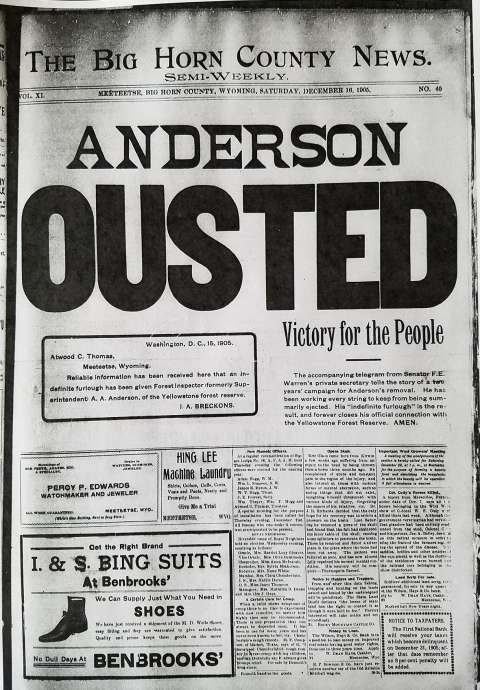
Today we often associate that divide with naturalist John Muir, favoring preservation of scenery in national parks, versus Gifford Pinchot, favoring sustained yield of timber and other resources in national forests (the successor to forest reserves). But those two men did not invent the divide; indeed, it may be better represented by the rift between by A.A. Anderson and the residents of northwest Wyoming. Anderson wanted to preserve habitat and scenery. The residents wanted to graze their livestock, cut timber and establish and maintain their homesteads.
Atwood C. Thomas, the business manager of the Big Horn County News in Meeteetse, painted Anderson as a rich outsider who wanted to lock up public lands for the private benefit of his wealthy friends. In an Oct. 21, 1905, story titled “Anderson Protects Private Game Preserve,” for example, the News quoted rangers who said that Anderson had ordered them to frighten elk away from local hunters near the Palette Ranch. And when Anderson’s eastern friends come to visit, the rangers said, they were instructed to shoo the elk toward the hunters.
That same month the News highlighted a line from a nearby newspaper, the Basin Rustler: “It seems the animus behind the forest reserve policy is the creation of immense game preserves where the idle rich may come to shoot elk and deer.” And from the Cody Enterprise: “If America is for Americans, why preserve vast areas of public domain for wild beasts, and a few sportsmen, and deprive a lot of good Christian Americans of the opportunity of making a home for themselves and families.”
The News promoted a petition calling for Anderson’s removal. It got at least 15 other newspapers to editorialize in favor of the petition. In lonely support of Anderson was the Meeteetse Standard, the newspaper he owned.
Anderson ousted
In some ways you could see this as an old-fashioned newspaper war, with opposing publications taking opposing sides on a hot local issue. Such conflicts were common enough; 16 years later Caroline Lockhart and Len Leander Newton would engage in a delicious one in Cody.
But if this was a war, the combatants’ lineups didn’t match well. Thomas of the Big Horn County News was a state senator and literally a town founder—he’d surveyed and platted the Meeteetse townsite in 1896. His editor, F. H. Barrow, went on to a lengthy career in Wyoming journalism.
By contrast, the Meeteetse Standard was never prominent enough to even be indexed by today’s Wyoming Newspaper Project; its only meaningful appearance in the Library of Congress database is as the source of a poem later reprinted in another paper: “But of country life he soon grew tired / There wasn’t much to see. / Says he: ‘I’ll find a lively town’ / He now resides in Meeteetse.” The News asserted that Anderson subsidized the Standard’s operating expenses just because he was rich and wanted a newspaper to spout his views.
In late 1905 the political pressure associated with the petition grew. The Interior Department reassigned Anderson from “special superintendent” to “inspector”—but critics charged that he continued to run the reserve as if it were his. Finally, on Dec. 15, 1905, Thomas received a telegram from J.A. Breckons, an assistant to Wyoming’s U.S. Sen. Francis Warren in Washington, D.C.: “Reliable information has been received here that an indefinite furlough has been given Forest Inspector (formerly Superintendent) A.A. Anderson, of the Yellowstone forest reserve.”
The News printed it under a headline, in lurid red, taking up almost half the front page. “Anderson OUSTED: Victory for the People.”
Two weeks later Anderson submitted a letter of resignation, citing his need to go abroad with his sick wife. He didn’t mention any controversies, and said he appreciated the support of Gifford Pinchot. But the News reminded readers of “his unfair treatment of old-time settlers, while showing favors to intimate and influential friends in the matter of letting them use the reserve for grazing lands.”
The preservation/conservation divide had claimed a victim: Anderson had failed to reconcile his love for wildlife habitat with the democratic needs of Wyoming’s citizens. Presumably, he had hoped to combine preservation of habitat with sustained yield of natural resources for the health of local economies. But instead, his efforts were portrayed as part of an elitist class war to abandon conservation in favor of hoarding wildlife resources for the privileged few. He paid for that failure with his job. Of course, he was rich enough not to need a job—but Wyoming and the nation might have benefitted if he’d found a way to bridge that gap.
Aftermath
Anderson lived a long and productive life before dying in 1940 at age 93. He continued to hunt in Wyoming with aristocratic friends. He authored a rather self-serving autobiography. He became fascinated by aviation, and applied his money and networking to the new field. Perhaps most memorably, he commissioned the acclaimed Bryant Park Studios building in New York City, where he and Elizabeth lived in a penthouse apartment described by The New York Times as “one of the most beautiful in the country” until the end of their lives.
But his particular role in the Yellowstone Forest Reserve has an interesting coda. The month after his resignation, Anderson sued the Big Horn County News for libel. His lawyer, Orin Woods of Basin, sought $10,000. The News was represented by W.L. “Billy” Simpson of Cody, father of future Wyoming Gov. Milward Simpson and grandfather of future U.S. Sen. Al Simpson and his brother, Pete, longtime Wyoming legislator, educator and university development officer.
The suit dragged on for almost 18 months. Finally in June 1907, came an announcement: “Sale of the Big Horn County News, a weekly newspaper published here, to A. A. Anderson, a New York artist and friend of Chief United States Forester Gifford Pinchot, involves the withdrawal of a $10,000 suit for defamation of character which Anderson some time ago brought against the News.”
Attorney Woods took over as the newspaper’s manager. Anderson’s Meeteetse Standard, Woods said, would soon move to Greybull (in fact it apparently shut down). “We have no ulterior or hidden motive,” Woods said. “We believe that it is a good business venture, and that is all.” Anderson himself did not comment. He was off on his next adventure in Alaska.
Resources
Primary sources
- Anderson, A.A. Experiences and Impressions (Freeport: Books for Libraries Press, 1933). The privately printed autobiography deserves some skepticism.
- Pinchot, Gifford. Breaking New Ground (New York: Harcourt Brace, 1947; Washington: Island Press, 1988). Does not mention Anderson but discusses views of early forestry, especially p. 121.
- Seton, Grace Gallatin, A Woman Tenderfoot (New York: Doubleday, Page, 1900).
- Thompson, Ernest Seton, “Elkland,” Recreation 7 (1897), 199. [Before 1900, he published under his birth surname Thompson, using Seton as a middle name. Later he reversed the names, and that’s how he’s generally known. Thus in the text he’s Ernest Thompson Seton, but in this reference he’s Ernest Seton Thompson.]
- Newspapers in Meeteetse and Cody regularly wrote about Anderson; researchers can search on his name at http://newspapers.wyo.gov/. See especially:
- “Anderson Ousted,” Big Horn County News, December 10, 1905, p. 1.
- “’Wab,’ Wisest of Bears, Falls Victim to Anderson’s Rifle After Many Years of Defiance,” Park County Enterprise, September 22, 1915, p. 1. [Seton’s book established the spelling of “Wahb.” But Anderson or the Enterprise here used an alternate.]
- USDA Forest Service and Cody Lions Club, “Shoshone National Forest: Golden Anniversary,” August 1941. This booklet at the Park County Historical Archives contains several reminiscences by early forest rangers.
Secondary sources
- Allan, Esther B. “History of Teton National Forest.” Jackson, Wyo.: Bridger-Teton National Forest, 1973, pp. 107-120, accessed July 3, 2017, at https://www.fs.usda.gov/Internet/FSE_DOCUMENTS/fseprd534131.pdf. Relies on Anderson’s autobiography as validated by unspecified Forest Service records.
- Anderson, H. Allen. The Chief: Ernest Thompson Seton and the Changing West (College Station, TX: Texas A&M Univ. Press, 1986) is a good biography with some discussion of A.A. Anderson.
- Bonner, Robert E. William F. Cody's Wyoming Empire: The Buffalo Bill Nobody Knows (Norman, Okla.: University of Oklahoma Press, 2007) covers Anderson in relation to Buffalo Bill.
- Burns, Emily C., “Revising Bohemia: The American artist colony in Paris, 1890-1914,” in Susan Waller and Karen L. Carter, Foreign Artists and Communities in Modern Paris, 1870-1914: Strangers in Paradise, Ashgate Publishing, 2015.
- Clayton, John, Wonderlandscape: Yellowstone National Park and the Evolution of an American Cultural Icon (New York: Pegasus, 2017) has a chapter on Ernest Thompson Seton in Wyoming, including his interactions with Anderson.
- Daugherty, John et. al., A Place Called Jackson Hole: A Historic Resource Study of Grand Teton National Park. Chapter 17: Conservationists. Grand Teton National Park and Grand Teton Natural History Association, 1999. Brief discussions of Anderson’s forestry from a Jackson Hole perspective.
- Dearinger, David Bernard, Paintings and Sculpture in the Collection of the National Academy of Design: 1826-1925 (Hudson Hills, 2004), pp. 16-17.
Archives and collections
- Anderson’s papers are at the American Heritage Center in Laramie: https://rmoa.unm.edu/docviewer.php?docId=wyu-ah05630.xml
- Yellowstone National Park also has a small collection of Anderson papers, as described here: https://www.nps.gov/yell/blogs/lost-to-history-a-a-anderson.htm
- A.A. Anderson vertical file, McCracken Research Library, Buffalo Bill Center of the West, Cody Wyoming. The McCracken also has a copy of a limited-edition book by Robert Eldon Harvey, The Art of Abraham Archibald Anderson, 1870–1940 (Stamford, CT: The Ashforth Company, 2007).
For further reading
- Anderson is in the Wyoming Outdoor Hall of Fame: https://wgfd.wyo.gov/Get-Involved/Outdoor-Hall-of-Fame/Abraham-Archibald-Anderson
- Anderson’s painting studio in the Washakie Wilderness is on the National Register of Historic Places, and recently underwent architectural study. http://wyoarchaeo.state.wy.us/index.php/learn/wyoming-archaeology-awareness-month/project-a-day/63-september-8-anderson-lodge
- Jeremy M. Johnston provides background in the introduction to a recent reissue: Ernest Thompson Seton, Jeremy M. Johnston (ed.), and Charles R. Preston (ed.), Wahb: The Biography of a Grizzly (Norman: University of Oklahoma Press, 2015). Johnston’s article “On the Trail of a Bear Named Wahb” describes Anderson’s ranch and his relationships with Seton and the giant grizzly Wahb.
- For Anderson’s genealogy, including his deceased son, see: http://wc.rootsweb.ancestry.com/cgi-bin/igm.cgi?op=GET&db=geer%5Ffamily%5Ftree&id=I473203
- The legend of Warhouse Creek is discussed (although not well documented) at http://www.wyomingtalesandtrails.com/cody4.html
- For the legacy of the Camp Fire Club, see: https://www.campfirefund.org/camp-fire-club-legacy/
- A fascinating history of the Bryant Park studios: http://daytoninmanhattan.blogspot.com/2012/10/the-1901-beaux-arts-studios-80-west.html
AA’s article from Annals, 1927
- http://www.foresthistory.org/ASPNET/Publications/region/2/yellowstone/YellowstoneForestReserve.htm
- AHW item: https://www.historicwyoming.org/historicplacesblog/aa-anderson-lodge
Illustrations
- The 1913 photo of A.A. Anderson and others at Camp Monaco, the photo of the Palette Ranch lodge and the photo of Anderson’s studio near Warhouse Creek are all from the Park County Archives. Used with permission and thanks.
- The photo of A.A. Anderson on horseback is No. PN.89.106.21000.01 from the Jack Richard Collection at the Buffalo Bill Center of the West. Used with permission and thanks.
- Anderson’s portrait of Thomas Edison hangs at the National Gallery in Washington, D.C. This image is from Wikipedia. Used with thanks.
- The image of the Big Horn County News front page on Dec. 10, 1905, is from the Wyoming Newspapers website. Used with thanks.
